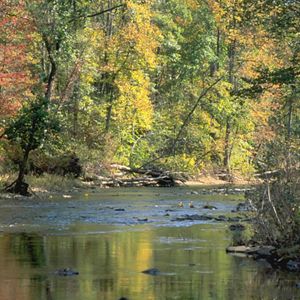Description
Not only are most species in shale barrens unusual, but at least twelve species of plants are endemics that are restricted to shale barrens. Oldtown is one of Maryland’s best and largest examples of this nationally-rare community.
Shale barrens represent a unique combination of geology, soil, topography and climate. They are restricted in Maryland to Devonian shale outcrops in the Ridge and Valley physiographic region. They exist only on steep, south-facing slopes, usually where a stream or river has steeply undercut the shale.
The Ridge and Valley region is the driest region in Maryland because it is in the rain shadow of the Appalachian Plateau. Add the southern exposure, the steep slopes that shed rain quickly and the thin soils, and the habitat is like a desert. The plants and animals at Oldtown are the result of their adaptation to such conditions.
Among the species at Oldtown that are nationally endangered are the plants endemic to this restricted formation, such as evening primrose (Oenothera argillicola), shale ragwort (Senecio antennarifolius) and Kate’s mountain clover (Trifolium virginicum).
The preserve also features state-rare species, including the largest colony in Maryland of the three-flowered melic grass (Melica nitens). These shale barrens are also habitat for five-lined skinks, wood turtles, copperhead snakes, pine and prairie warblers, white-eyed vireos and Carolina wrens.
The Nature Conservancy has protected 16 acres at Oldtown since 1988. Management of this preserve includes maintaining boundary lines and discouraging visitation to the steep, fragile slopes.
This preserve is only open to scientific research with prior permission from TNC. Even a few visitors can cause damage to the plants and animals that live here. Thank you for understanding and help in protecting this important part of Maryland’s natural heritage.






